Basic Guide To Stone Foundations
36,963 people have read this article!
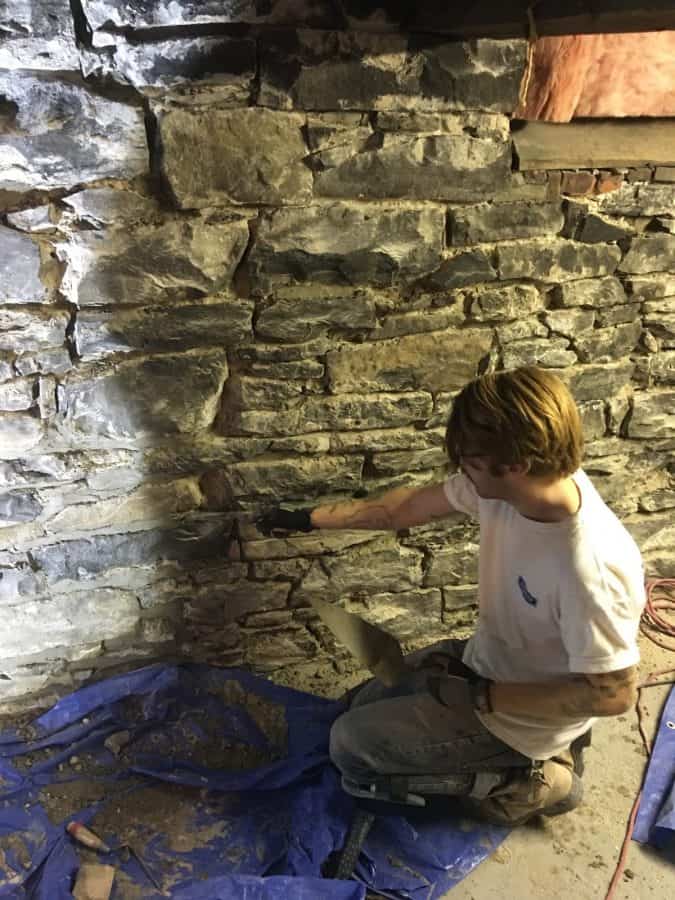
A foundation is a structure that creates a strong, level base on which to build. It’s critically important that the foundation is properly built and levelled or there will be serious problems elsewhere in the house. Improperly done foundations cause settlement issues, wall cracking, bowing, water penetration and a host of other issues.
Natural stone has been used for thousands of years until as recently as about the 1940s. Its main attributes are high compressive strength, incredible durability and local availability.
The stone foundations in the Ottawa area are all built the same way: Two walls (or wythes) of stone each 8 inches thick are built facing opposite directions with a 4-inch space in between. This space is filled with a liquid lime-based mortar and the stone wythes are pointed up and sealed. Almost all the stone foundations in Ottawa are made with the same stone, local limestone.
Many different qualities of stonework are used, depending on the structure and the mason. Most of the ones in and around Ottawa area are described below.
Fully Pitched Scotch Bond – This was the Cadillac of stone foundations in the 19th and early 20th century. All stones are mostly squared and have the faces pitched. This creates the “breasted” look and allows a straighter building line. Each stone is carefully worked by the mason at various angles and a series of rules is followed when laying out the pattern.
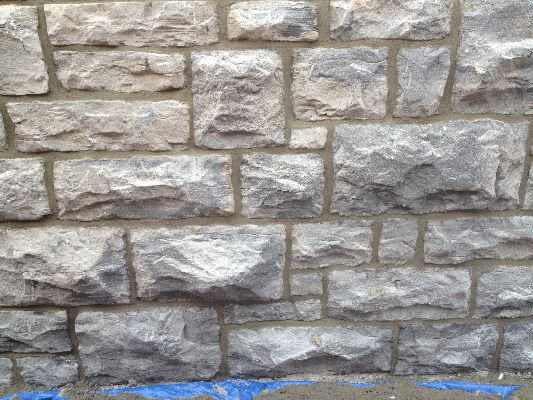
Roughly Squared Scotch Bond – The is a medium grade of stonework. The stones are squared, but with a relaxed tolerance. Some stones are joined at matching angles, if convenient. The faces of the stones are pitched only when necessary to get the stones in the wall line so the breasting is less apparent.
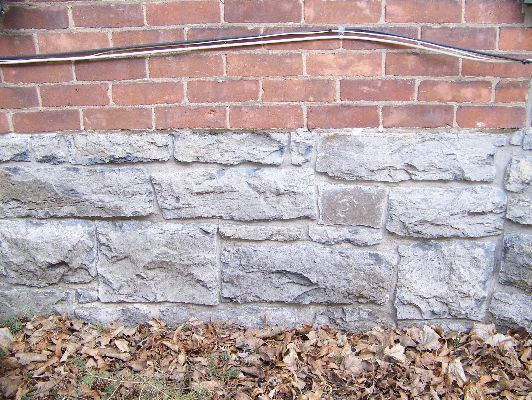
Random Rubble – The lowest grade of stonework, but also an art form if done properly. This pattern involved simply using whatever stone was on the top of the pile and laying it where it fit. Corners would be built with the largest and most square stones. The very little cutting that was done was usually with a stone hammer to simply knock off a chunk to make a piece fit. Random rubble was usually built with materials found on the site. This is part of the beauty of using stone.
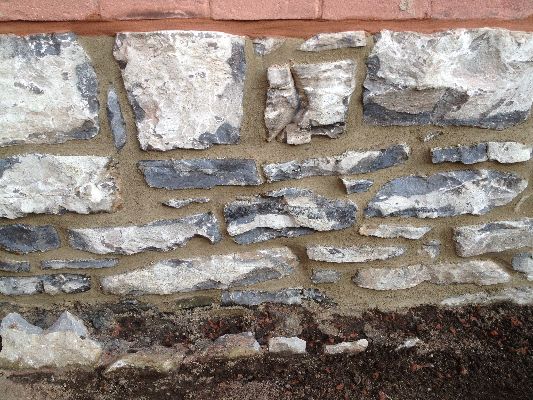
Almost all interior walls foundation walls are random rubble of varying degrees. People didn’t care what the inside walls looked like, especially since they were often parged, painted or whitewashed anyway.
Typical Stonework on interior foundation wall
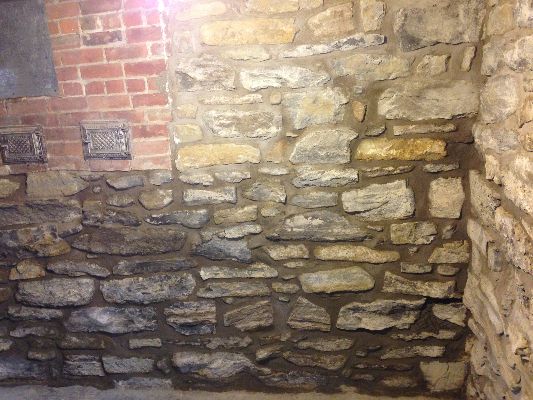
A stone foundation has some special characteristics when compared to other foundation types (concrete, block or site mix).
1. Water penetration
A stone foundation is great at dealing with water for a few reasons. It’s so thick (20″+), that small amounts of water which penetrate into the cracks simply get absorbed by the mass masonry and harmlessly evaporated outwards. Try spraying a hose, or dumping a jug of water on a stone foundation and you will see the water magically disappear. It’s amazing how much water the wall can absorb before the saturation point. The grouted centre of the wall is usually bone dry and crumbly, and this helps sponge up the water as it penetrates the stone. The water then evaporates out naturally.
2. Compressive strength
Natural stone has one of the highest compressive strengths of all building materials. Since the stone is formed in layers built up over millions of years and squeezed together by climate changes, such as heat and pressure, the final product is densely compressed. You would have to stack up stone blocks 4 kilometres high before the block on the bottom got crushed! This is why it’s great for building foundations.
3. Durabilty
Of all masonry products (brick, concrete, block, man-made products, etc.) natural stone is by far the most durable. Bricks and concrete both deteriorate with water penetration; bricks cannot be placed below grade and are usually hollow on the inside; concrete always pits and cracks and is hard to repair. Stone, on the other hand, will almost never experience these problems. Furthermore, it is the ultimate all-natural product: It came from the ground and it can be buried for thousands of years and still look the same.
Stone foundations haven’t been used much since the 1950s because new, cheaper methods were devised, such as poured concrete and concrete block, both of which are faster to construct and require less skilled labour. But they also don’t last as long. So if your stone foundation is 100 years old, don’t worry: with a little maintenance, it will easily last another 100 years, and beyond!

